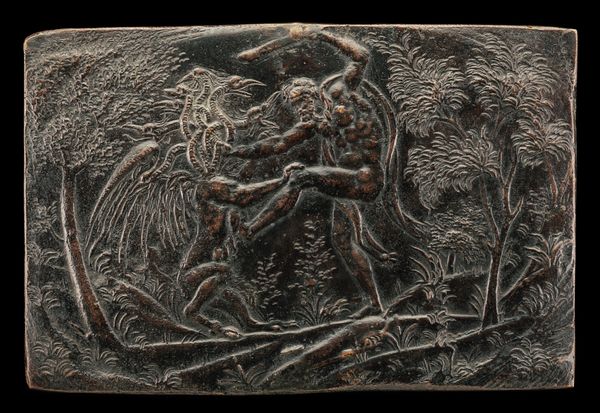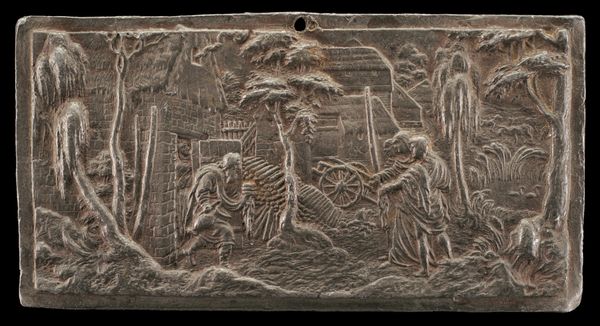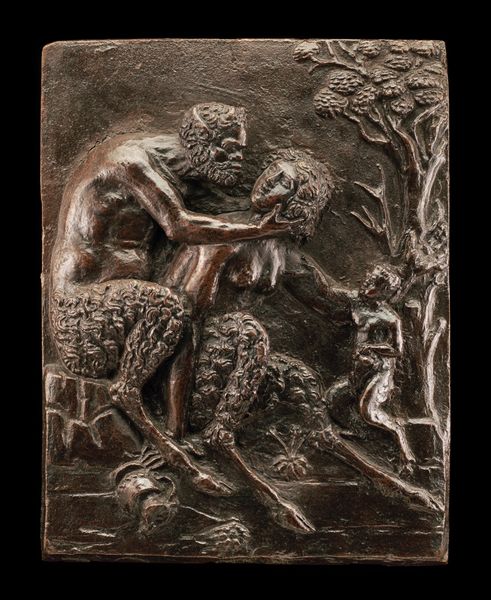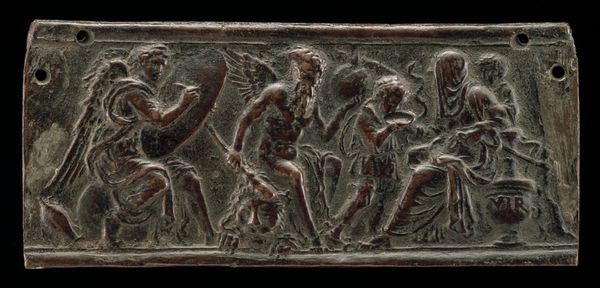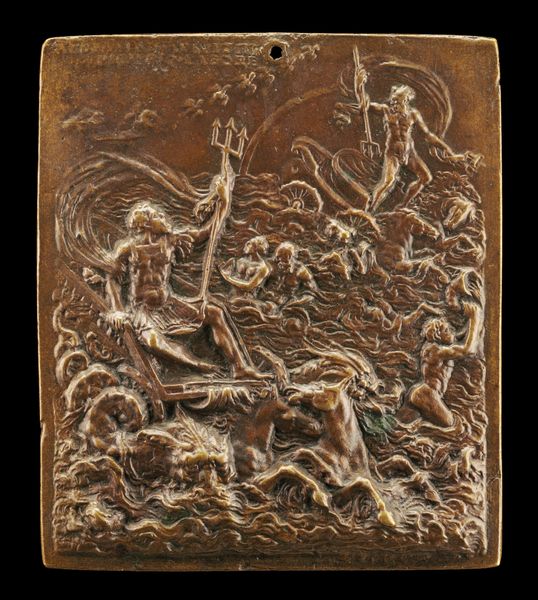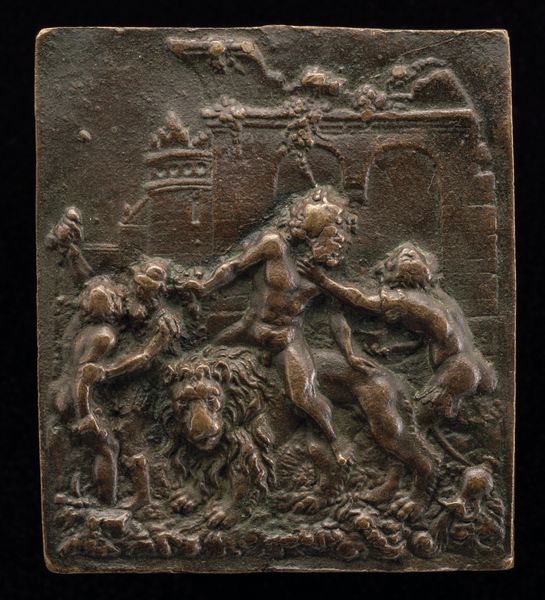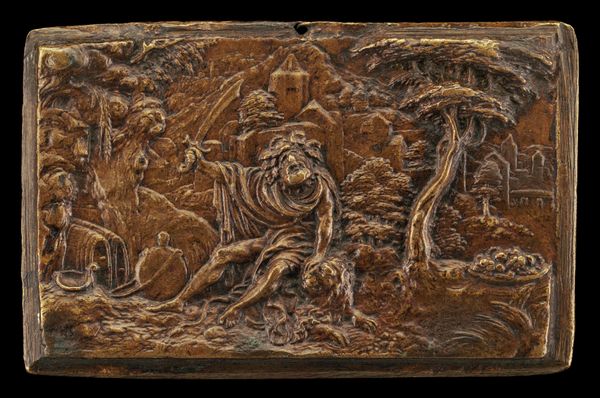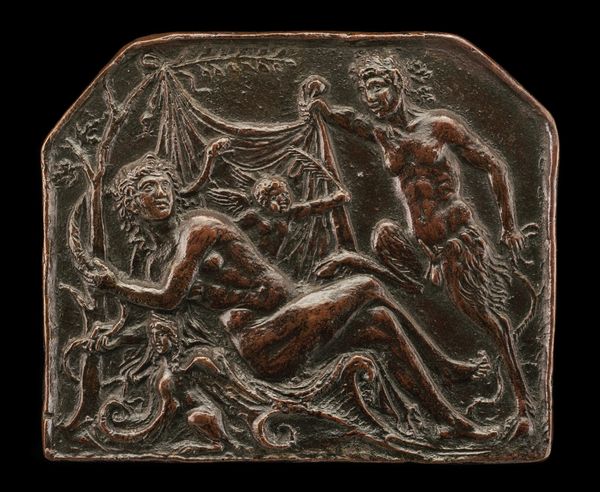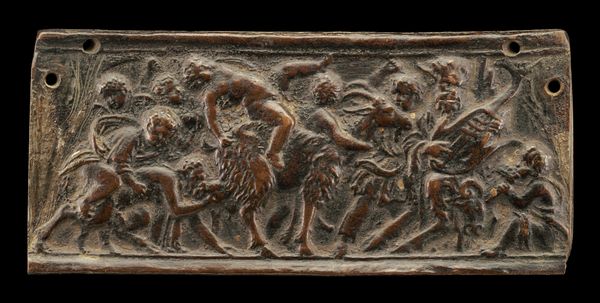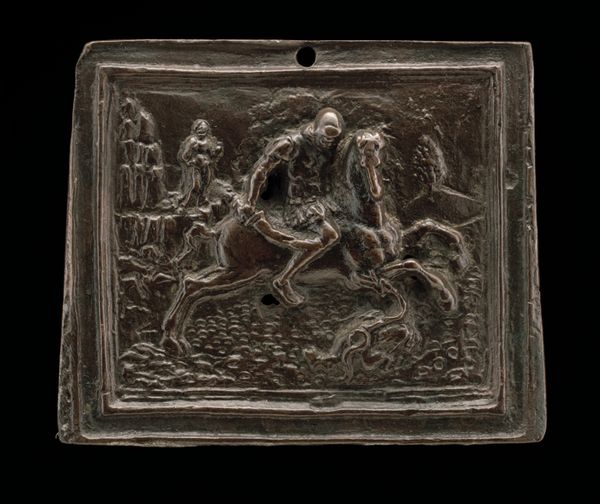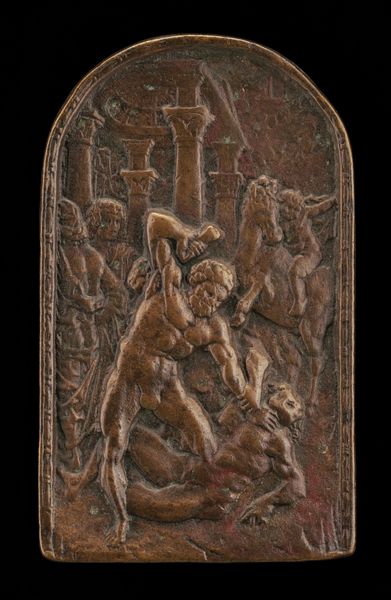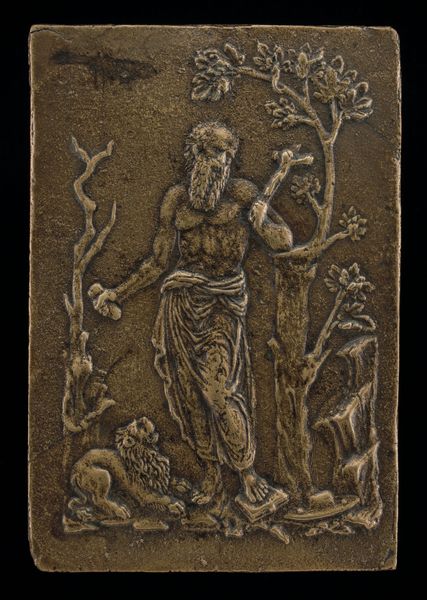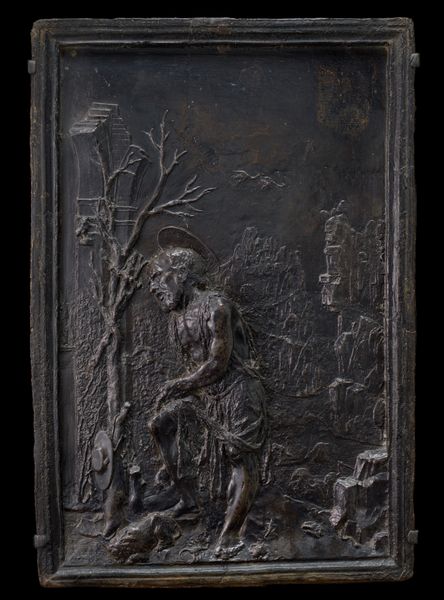
relief, bronze, sculpture
#
sculpture
#
relief
#
bronze
#
mannerism
#
figuration
#
sculpture
#
history-painting
Dimensions: overall: 9.1 x 13.6 cm (3 9/16 x 5 3/8 in.)
Copyright: National Gallery of Art: CC0 1.0
Curator: This relief panel presents a moment of high drama. Its earthy tones seem fitting to a descent into the underworld. Editor: It's incredibly energetic. The figures are tense and dynamic, but also kind of…claustrophobic. Like a condensed version of a grander narrative. Curator: Indeed. The work, entitled "Hercules and Cerberus", attributed to Annibale Fontana, and likely produced sometime between 1570 and 1587, captures one of the hero's twelve labors. Editor: What strikes me is that rendering of this struggle in bronze seems intended to immortalize, almost deify, Hercules. He's actively taking his place among the heroes, both artistically and mythologically. Is the use of bronze a common thing in that era? Curator: The use of bronze as a medium elevates the subject matter itself, associating it with enduring power and value. What makes it particularly interesting here is how Fontana manages to evoke this monumental struggle in a relatively small-scale format. Its compact scale and the way the scene bursts beyond the frame may evoke psychological intensity for the viewer. Editor: Definitely. Even the landscaping participates in this narrative. It creates a sense of place, hinting at that shadowy realm which lies beyond the familiar. You mentioned psychology— Curator: Yes, I believe this dense network of symbols acts to compress the epic narrative of individual and collective transformation into one easily repeatable visual image. Bronze has a weight beyond just material mass; consider how easily these iconic figures spread through repetition over many centuries. Editor: This makes me wonder about its initial viewing context. Where was such a bronze relief originally intended to be displayed, or experienced? The details embedded are quite extraordinary. Curator: That's a key question when we examine artworks. Objects such as this would often decorate a studiolo of a prominent Renaissance patron, which is itself a means of presenting and preserving symbols of their influence and knowledge to an exclusive, elite audience. Editor: It is difficult to view it outside that cultural lens. Thank you for making that clearer! Curator: The past truly comes alive when we place these stories within their social and symbolical frame.
Comments
No comments
Be the first to comment and join the conversation on the ultimate creative platform.
